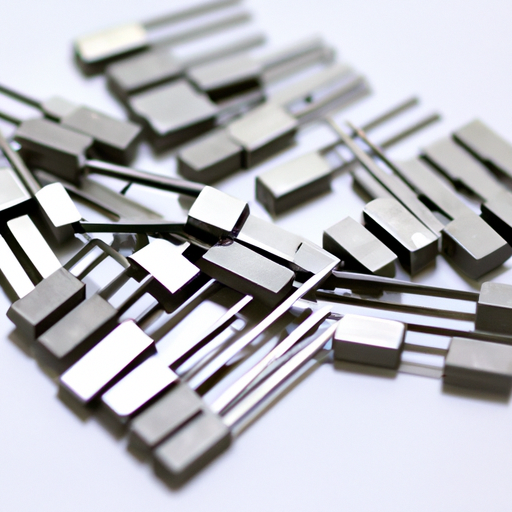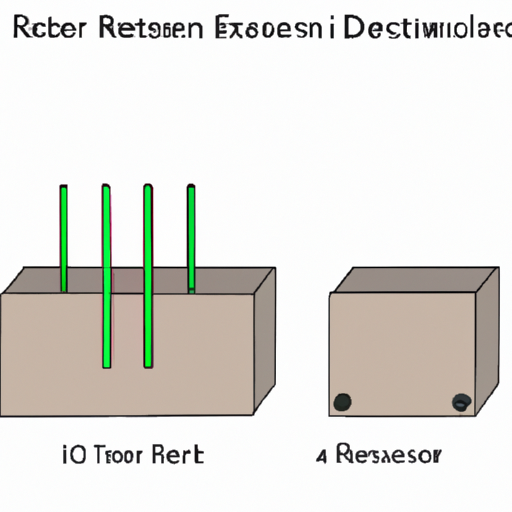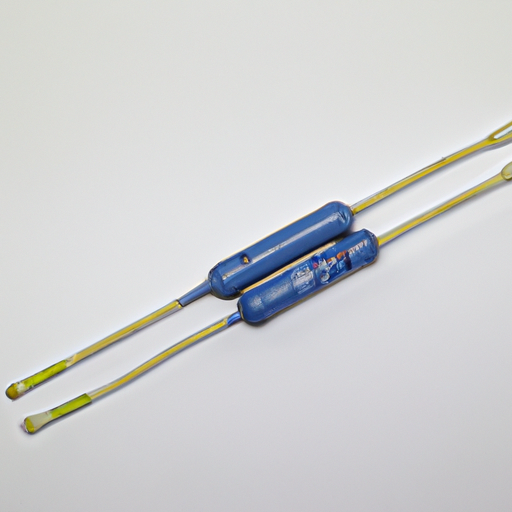What are the common production processes for resistor packaging?
Common Production Processes for Resistor Packaging
I. Introduction
Resistor packaging is a critical aspect of electronics manufacturing, serving as the protective and functional enclosure for resistors used in various electronic devices. Resistors are fundamental components that regulate current flow, and their packaging ensures reliability, durability, and performance in diverse applications. This article explores the common production processes involved in resistor packaging, highlighting the materials, techniques, and innovations that shape this essential industry.
II. Types of Resistors
Resistors come in various forms, each designed for specific applications and performance requirements. Understanding the types of resistors is crucial for grasping their packaging needs.
A. Fixed Resistors
Fixed resistors have a predetermined resistance value and are widely used in circuits for current limiting and voltage division. Their packaging must ensure stability and reliability over time.
B. Variable Resistors
Variable resistors, such as potentiometers and rheostats, allow users to adjust resistance values. Their packaging often includes mechanisms for easy adjustment while protecting the internal components.
C. Specialty Resistors
Specialty resistors, including thermistors and photoresistors, are designed for specific applications, such as temperature sensing or light detection. Their packaging must accommodate unique operational requirements.
D. Overview of Packaging Needs for Different Types
Each type of resistor has distinct packaging needs based on its function, size, and environmental exposure. For instance, fixed resistors may require robust packaging to withstand high temperatures, while variable resistors need user-friendly designs for adjustment.
III. Materials Used in Resistor Packaging
The choice of materials in resistor packaging is vital for performance, durability, and safety.
A. Conductive Materials
1. **Metal Films**: Commonly used in thin film resistors, metal films provide precise resistance values and excellent stability.
2. **Carbon Composition**: This material is often used in fixed resistors, offering good performance at a lower cost.
B. Insulating Materials
1. **Epoxy Resins**: These resins are used for encapsulating resistors, providing electrical insulation and protection against environmental factors.
2. **Ceramic Materials**: Ceramic is often used in high-power resistors due to its excellent thermal properties and electrical insulation.
C. Protective Coatings
1. **Conformal Coatings**: These coatings protect resistors from moisture, dust, and chemicals, enhancing their reliability in harsh environments.
2. **Heat Shrink Tubing**: This is used to provide additional insulation and protection, especially in wirewound resistors.
IV. Common Production Processes
The production of resistor packaging involves several key processes, each contributing to the final product's quality and performance.
A. Design and Prototyping
1. **CAD Software for Design**: Computer-Aided Design (CAD) software is used to create detailed designs of resistors and their packaging, allowing for precise specifications and modifications.
2. **Prototyping Techniques**: Rapid prototyping techniques, such as 3D printing, enable manufacturers to create and test designs before full-scale production.
B. Material Preparation
1. **Sourcing Raw Materials**: Manufacturers must source high-quality raw materials to ensure the performance and reliability of the resistors.
2. **Material Processing Techniques**: Techniques such as cutting, shaping, and treating materials are essential for preparing them for assembly.
C. Resistor Fabrication
1. **Thin Film Technology**: This method involves depositing a thin layer of resistive material onto a substrate, allowing for precise resistance values and compact designs.
2. **Thick Film Technology**: Thick film resistors are made by printing a paste of resistive material onto a ceramic substrate, offering a balance between performance and cost.
3. **Wirewound Technology**: In this method, a wire is wound around a core to create resistance, suitable for high-power applications.
D. Packaging Techniques
1. **Surface Mount Technology (SMT)**: SMT allows resistors to be mounted directly onto the surface of printed circuit boards (PCBs), facilitating compact designs and automated assembly.
2. **Through-Hole Technology**: This traditional method involves inserting resistor leads through holes in the PCB, providing robust connections but requiring more space.
3. **Chip Resistor Packaging**: Chip resistors are small, surface-mounted components that are ideal for high-density applications, requiring specialized packaging techniques.
E. Quality Control and Testing
1. **Electrical Testing**: Rigorous electrical testing ensures that resistors meet specified resistance values and performance criteria.
2. **Environmental Testing**: Resistors undergo environmental testing to assess their performance under various conditions, such as temperature and humidity.
3. **Reliability Testing**: Long-term reliability testing helps identify potential failures and ensures that resistors can withstand operational stresses.
V. Automation in Resistor Packaging
Automation plays a significant role in enhancing the efficiency and consistency of resistor packaging processes.
A. Role of Automation in Production Efficiency
Automated systems streamline production, reduce human error, and increase output, allowing manufacturers to meet growing demand while maintaining quality.
B. Use of Robotics in Assembly
Robotic systems are increasingly used in the assembly of resistors, enabling precise placement and soldering, which enhances the overall quality of the final product.
C. Automated Testing Systems
Automated testing systems facilitate rapid and accurate testing of resistors, ensuring that only products meeting quality standards reach the market.
VI. Environmental Considerations
As the electronics industry evolves, so does the focus on sustainability and environmental responsibility in resistor packaging.
A. Sustainable Materials in Resistor Packaging
Manufacturers are exploring sustainable materials, such as biodegradable plastics and recycled components, to reduce the environmental impact of resistor packaging.
B. Waste Management Practices
Effective waste management practices, including recycling and proper disposal of materials, are essential for minimizing the ecological footprint of resistor production.
C. Compliance with Environmental Regulations
Adhering to environmental regulations ensures that manufacturers operate responsibly and contribute to a sustainable future.
VII. Future Trends in Resistor Packaging
The resistor packaging industry is poised for significant advancements driven by technological innovations and changing market demands.
A. Miniaturization and Its Impact
As electronic devices become smaller and more compact, the demand for miniaturized resistors and packaging solutions is increasing, prompting manufacturers to innovate.
B. Advances in Materials Science
Research in materials science is leading to the development of new materials that enhance the performance and reliability of resistors, paving the way for more efficient packaging solutions.
C. Innovations in Production Techniques
Emerging production techniques, such as additive manufacturing and advanced automation, are transforming the resistor packaging landscape, enabling greater customization and efficiency.
VIII. Conclusion
In summary, resistor packaging is a complex process that involves various materials, techniques, and innovations. Understanding the common production processes is essential for appreciating the role of resistors in electronics. As the industry continues to evolve, manufacturers must prioritize quality, sustainability, and innovation to meet the demands of an ever-changing market. The future of resistor packaging looks promising, with advancements in technology and materials science paving the way for more efficient and reliable solutions.
IX. References
A comprehensive list of academic journals, industry reports, and manufacturer guidelines can provide further insights into the intricacies of resistor packaging and its production processes. These resources are invaluable for anyone looking to deepen their understanding of this essential component of electronics manufacturing.






